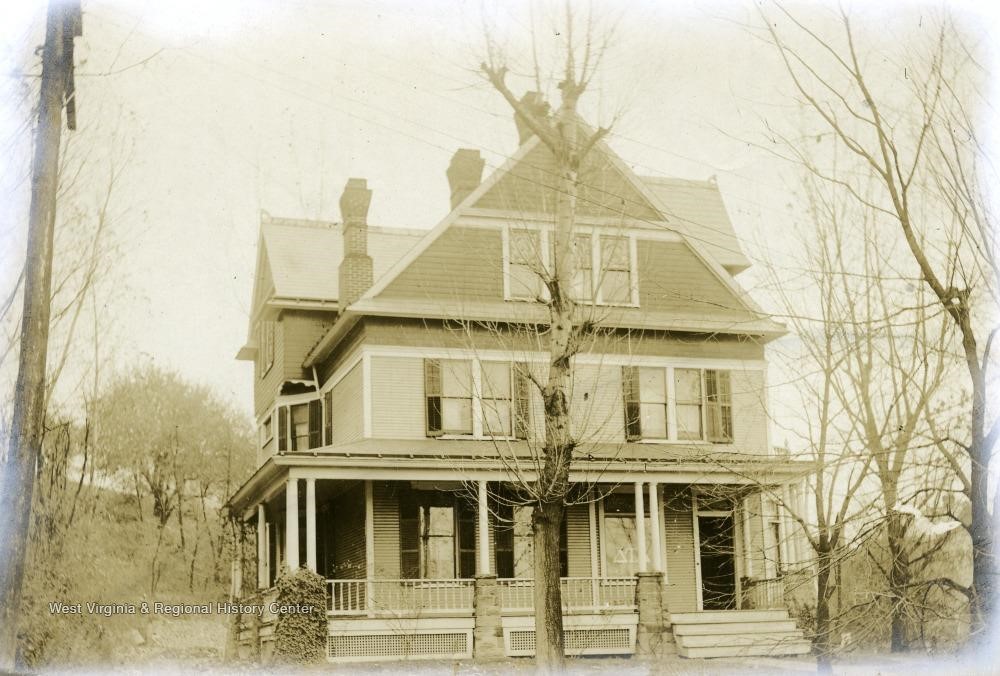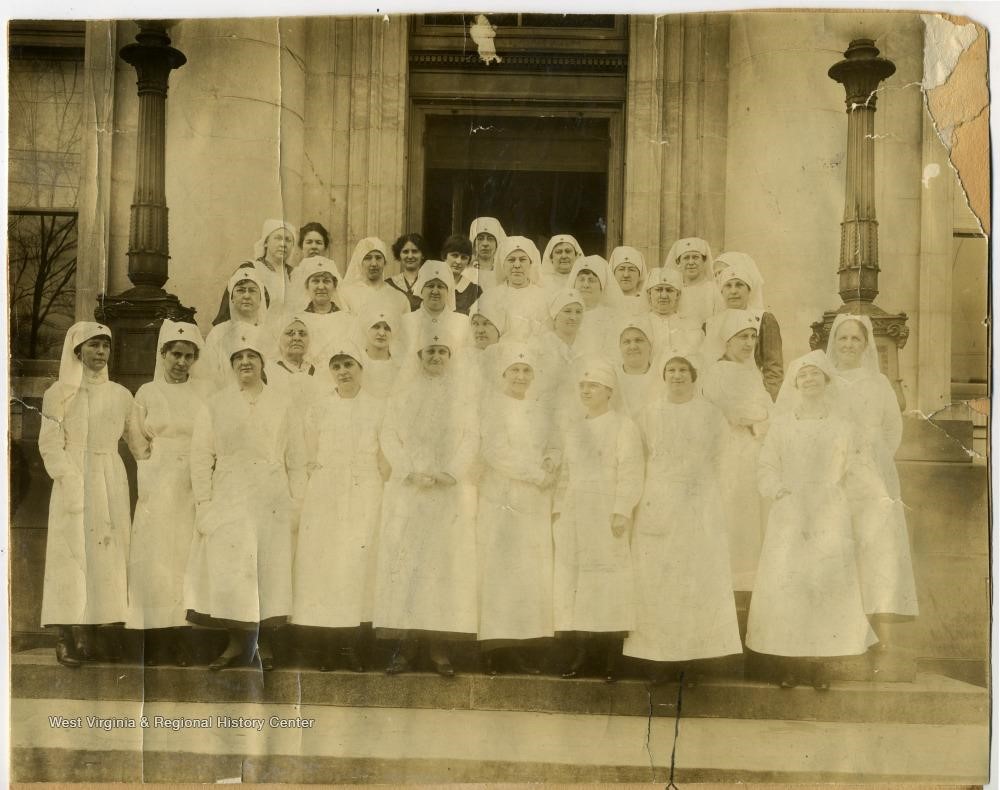The 1918 Spanish Influenza in Morgantown
Posted by Jane Metters LaBarbara.April 15th, 2019
Blog post by Jessica Eichlin, Reference Supervisor, WVRHC.
Lucy Shuttlesworth, a twenty year old West Virginia University student, recorded the 1918 flu epidemic in her diary, writing that “the Spanish influ[enza] is spreading like mad, 150 of the boys have it, (the Delt house has been taken over as a hospital) ten girls at the hall and five of our kids at the house” have it. The particularly deadly strain of Spanish influenza initially appeared in August 1918, but the first mention of the fall epidemic did not appear in a local Morgantown newspaper until September 11, 1918. By September twenty-fifth, an unidentified Associated Press author states that “Spanish influenza has spread over the country so rapidly that officials of the public health service, the war and navy departments and the Red Cross conferred today on measures to help local communities in combating the disease,” which had spread to twenty-six states. By October first, the number of cases nationwide reached 88,000, and the Spanish flu finally arrived in Morgantown.
The first local article about the Spanish influenza appeared in Morgantown’s The New Dominion. Influenza had arrived in Morgantown among college students in the Student Army Training Corps (S.A.T.C.) on October first. On the fourth, the local chapter of the American Red Cross took over the Delta Tau Delta fraternity house for use as a hospital to treat “mumps and epidemic influenza” patients. No one at West Virginia University or in Morgantown had yet died, but the state was not taking chances, given the terrifying reports of influenza from across the country.

The Delta Tau Delta house, which was utilized as a hospital for influenza patients, ca. 1918.
On October seventh, there were seven full articles, both local and national, about the epidemic. An Associated Press article from Harrisburg, Pennsylvania dated October 6th pleaded for “500 doctors and 250 nurses . . . to fight influenza.” Directly below this appeal is a small advertisement from Sturgiss Pharmacy, located on High Street, which announced extended hours until 11:30 pm “during the present epidemic of influenza.” The longest article about influenza on the seventh detailed the “strict rules in effect to stop epidemic” which included “schools, places of amusement and soda fountains closed indefinitely, public gatherings, including churches and Sunday schools, prohibited, meetings of the grand jury and petit jury postponed, and other restrictions imposed.” By shutting down most of the public meeting places and events in town, Morgantown officials attempted to avoid the full impact of the disease.
West Virginia University cancelled classes as well, and students were given permission to return to their homes, perhaps further spreading the disease. Despite these measures, by October ninth, the “total number of cases in the city and among University students was estimated . . . as 300.” Two days later, on October eleventh, the total cases reported was at 543.
Influenza spread in Morgantown, although not quite as rapidly as it did in larger cities. On October twelfth, the number of cases in Morgantown hit 600, and two days later, it hit 700. Reporters at The New Dominion attempted to give a report on the number of deaths in the city, but “the undertaking establishments were too busy to give complete reports of the deaths.” On the fifteenth of October, the number of cases increased to 786 and people began dying rapidly.
Six separate deaths were reported on the sixteenth, including a ten-year-old girl and a university professor who died suddenly. An October sixteenth article on the status of the epidemic in Morgantown takes a drastically different tone than previous articles, just as the total number of cases reached 850. Describing the Spanish influenza, the author laments that “the ever spreading wave of the disease appears to be more formidable than it has been at any time since it first made its appearance in Morgantown . . . and the prospects for abatement of the epidemic are still not in sight.”

Group of Red Cross nurses in front of Morgantown Post Office.
Luckily, beginning on October eighteenth, local officials believed that “the crest of the wave” of influenza had been reached. On the twenty-first, reports from local physicians indicated that there was a “slight decrease” in the number of new patients infected, and by the twenty-second, there was “a sharp decline” in the number of cases, leading the health department to believe that “the epidemic [was] drawing to a close.” The unofficial quarantine of the city would continue through November 5, and daily reports of deaths continued as well, but the epidemic had largely run its course through Morgantown.
Resources:
“Delta Tau Delta House, West Virginia University,” West Virginia History OnView, accessed February 9, 2019, https://wvhistoryonview.org/image/023365.jpg.
Diary written by Lucy Shuttleworth Dunlap, 1918-1921, A&M 4024, Lucy Shuttleworth Dunlap, West Virginia University Student, Diary and Scrapbook, West Virginia and Regional History Center, WVU Libraries, Morgantown, West Virginia. [https://archives.lib.wvu.edu/repositories/2/resources/3344]
“Group Portrait of Nurses in Front of Post Office in Morgantown, W. Va.,” West Virginia History OnView, accessed February 9, 2019, https://wvhistoryonview.org/catalog/034477.





